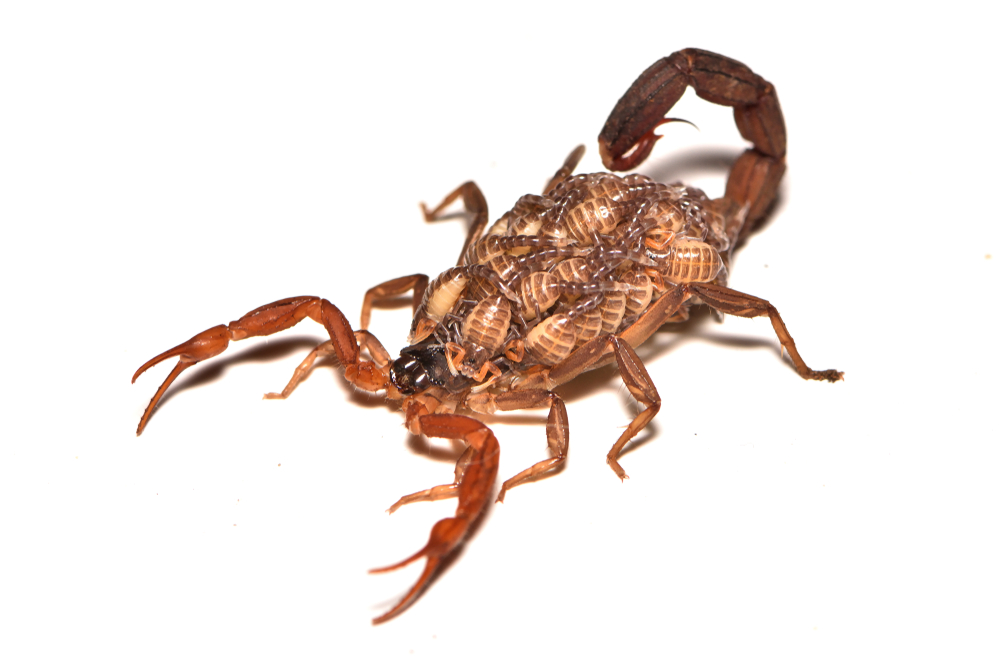How Dangerous Is the Most Venomous Scorpion? Everything You Need to Know
The Indian red scorpion, Hottentotta tamulus, is the most venomous in the world. Its venom can cause severe cardiovascular and respiratory issues, often leading to fatal outcomes. In this article, we explore why this scorpion is so deadly and look at other dangerous species.
The Indian red scorpion is considered the deadliest, with venom that can cause severe cardiovascular and respiratory effects, particularly endangering children. Antivenom plays a crucial role in reducing fatalities from scorpion stings, with advancements in treatment significantly improving recovery outcomes.
Indian Red Scorpion: The Most Venomous
The Indian red scorpion, also known as Hottentotta tamulus, is widely regarded as the deadliest scorpion in the world.
Found primarily in:
- Eastern India
- Pakistan
- Sri Lanka
- Nepal
This venomous scorpion is particularly prevalent in densely populated regions of India and Nepal, leading to numerous fatalities. Thriving in various habitats like scrublands, croplands, and areas near human dwellings increases the likelihood of encounters with humans.
The Indian red scorpion’s venom primarily impacts the cardiovascular and respiratory systems. Victims of this scorpion sting can experience symptoms ranging from abnormal heart rhythms and blood pressure variations to pulmonary edema, which can be fatal. Fatality rates from Indian red scorpion stings range alarmingly from 8% to 40%.
Children are particularly vulnerable to severe reactions from these scorpion stings. In children, the venom spreads more quickly and has a more profound effect due to their smaller body size. Anaphylactic reactions can also develop in individuals with a history of scorpion stings, leading to life-threatening symptoms. Children represent a significant portion of fatalities from stings by this species.
The Indian red scorpion’s reputation as the most venomous scorpion is well-earned due to its ability to cause severe health issues and fatalities, emphasizing the need to understand and respect these dangerous creatures.
Deathstalker Scorpion: A Close Second
A close contender for the title of the deadliest scorpion is the deathstalker scorpion, scientifically known as Leiurus quinquestriatus. Found in North Africa and the Middle East, this venomous scorpion is infamous for its potent neurotoxic and cardiotoxic venom, which can cause severe pain and life-threatening conditions. The deathstalker’s venom is so powerful that it poses a significant danger even to healthy adults.
Measuring about 2.5 inches in length and also known as the Palestine yellow scorpion, the deathstalker delivers a painful sting that can incapacitate its prey and deter potential threats. For humans, a sting from this scorpion can lead to symptoms such as intense pain, fever, convulsions, and in severe cases, respiratory failure and death.
Despite its fearsome reputation, the deathstalker is not the only scorpion to be wary of. While deadly, its venom is comparable to other species in its ability to inflict severe harm. However, the deathstalker’s aggression and prevalence in human-inhabited areas make it a significant threat in its native regions.
Brazilian Yellow Scorpion: South America’s Threat
Moving to South America, the Brazilian yellow scorpion, Tityus serrulatus, holds the title of the most dangerous scorpion on the continent. This species is responsible for over 180,000 sting incidents annually in Brazil, a number that has surged by over 200% in the past decade. Its venom contains a mix of neurotoxins and enzymes that not only cause severe symptoms but also facilitate the rapid spread of the venom within the victim’s body.
Common symptoms following a sting from this yellow scorpion include:
- stomach cramps
- vomiting
- difficulty breathing
- nausea
- rapid heart rate
The intensely painful sting can also lead to these symptoms. Elderly individuals and very young children are at a higher risk of death from the Brazilian yellow scorpion’s sting, making it a significant public health concern.
In its native regions, the Brazilian yellow scorpion continues to cause numerous fatalities each year. Awareness of the dangers and symptoms associated with this scorpion is crucial for residents and travelers in South America.
Arizona Bark Scorpion: North America’s Most Dangerous
The Arizona bark scorpion, known scientifically as Centruroides exilicauda, is considered the most dangerous scorpion in North America.
It poses a significant threat to humans in the region. Known for causing severe pain and potential fatalities, a sting from this scorpion can result in:
- numbness
- vomiting
- diarrhea
- possibly death
Despite the serious symptoms, fatalities are rare thanks to the effective use of antivenin over the past 40 years in Arizona.
Approximately 20,000 calls concerning scorpion stings are made to Arizona Poison Control Centers each year, highlighting the prevalence of this scorpion in the region. The Arizona bark scorpion’s sting is notorious for its severe pain, incapacitating victims and causing significant discomfort.
The availability of highly effective antivenin has been a game-changer in reducing fatalities from Arizona bark scorpion stings. This highlights the importance of medical intervention and advancements in scorpion sting treatments.
Yellow Fattail: The Desert Survivor
The yellow fattail scorpion, Androctonus australis, is another formidable predator, particularly known for surviving the harsh conditions of the desert. Its potent neurotoxic venom makes this scorpion one of the most lethal species. Its unique exoskeleton allows it to endure extreme sandstorms without seeking shelter, showcasing its remarkable adaptation to desert environments.
Capable of reaching lengths up to 10 centimeters, the yellow fattail scorpion uses its powerful tail for defense and to subdue its prey. Preying on insects, small lizards, and occasionally small mammals, it demonstrates versatility as a predator.
The yellow fattail’s ability to thrive in such extreme conditions while delivering a deadly sting makes it a true survivor among the world’s scorpions.
Arabian Fat-tailed Scorpion: Aggressive and Dangerous
The Arabian fat-tailed scorpion (Androctonus crassicauda) is another dangerous scorpion found in the Arab world, including regions such as Saudi Arabia, Iran, Turkey, and North Africa. Typically, this species inhabits old, abandoned buildings and areas with low vegetation in arid environments. Known for its aggressive temperament, this scorpion can be particularly dangerous when encountered.
The Arabian fat-tailed scorpion preys on insects, spiders, lizards, and small rodents, making it a versatile predator. It can grow to lengths exceeding 10 centimeters (approximately 3.9 inches), making it one of the larger scorpion species.
The aggressive nature and potent venom of the Arabian fat-tailed scorpion make it a significant threat in its native regions, warranting caution and respect from those who encounter it.
Spitting Thicktail Black Scorpion: A Unique Threat
The spitting thicktail black scorpion (Parabuthus transvaalicus) is unique among scorpions for its ability to spray venom from its tail as a defensive mechanism. Native to semi-arid areas of Southern Africa, including Botswana and Zimbabwe, this scorpion can reach lengths of around 3.5 to 4.3 inches, with some growing up to 6 inches.
This scorpion can spit scorpion venom up to 3 feet (1 meter), and its venom contains a distinct component known as ‘kurtoxin’, which contributes to its dangerous effects. Symptoms of its sting include intense pain, sweating, drooling, muscular convulsions, and heart palpitations.
Despite its potent venom, the death rate from a spitting thicktail black scorpion sting is less than 1%, underlining the effectiveness of medical treatments and the need for prompt medical attention.
Symptoms of Scorpion Envenomation
Scorpion sting victims can experience localized symptoms like intense pain, tingling, and slight swelling at the sting site. These symptoms can be incredibly uncomfortable and distressing, especially for those stung by some of the world’s deadliest scorpions.
Systemic symptoms can be far more severe, manifesting as breathing difficulties, muscle twitching, and excessive drooling. In severe cases, victims may experience heart issues and respiratory failure. Pulmonary edema, a condition where fluid accumulates in the lungs, can be a fatal consequence of severe envenomation.
Young children and older adults are particularly at risk of severe reactions from scorpion stings, emphasizing the need for immediate medical attention. Antivenom treatment, along with supportive medications, significantly enhances patient outcomes by reducing the severity and duration of symptoms.
Importance of Antivenom
Antivenom plays a crucial role in treating scorpion stings. Scorpion antivenom can neutralize venom toxins if administered promptly after a sting. Timely antivenom administration can significantly improve recovery times and reduce the severity of symptoms from scorpion envenomation.
Severe cases of Tityus serrulatus stings often require antivenom, with two main types available in Brazil. Antivenom for the deathstalker is available, but its venom poses treatment challenges due to resistance. This highlights the importance of ongoing research and development in antivenom formulations.
In Arizona, highly effective antivenom has drastically reduced fatalities from Arizona bark scorpion stings. This underscores the importance of having accessible antivenom in regions where dangerous scorpions are prevalent.
The development and distribution of anti-venom are critical in the fight against scorpion envenomation, providing a vital lifeline for those affected by these dangerous creatures.
Professional Pest Control Solutions
Effective scorpion population management requires professional pest control solutions. Eco-friendly pest control methods can effectively manage scorpion populations without harming the environment. Professional pest control companies often use sustainable practices to eliminate scorpions, ensuring the safety of humans and pets.
Engaging professional pest control services can be crucial for those living in scorpion-prone areas to ensure safety and peace of mind. Advanced techniques and eco-friendly pest control services from pest control companies effectively mitigate the risks posed by these dangerous arachnids.
Understanding the dangers posed by some of the world’s most venomous scorpions is essential for ensuring safety and well-being. From the Indian red scorpion to the spitting thicktail black scorpion, each species has unique characteristics and venom that can cause severe pain and potentially fatal outcomes.
Awareness of the symptoms of scorpion envenomation and the importance of timely medical intervention, including the use of antivenom, cannot be overstated. This knowledge is vital for those living in regions where these dangerous scorpions are prevalent.
Ultimately, staying informed and prepared can make all the difference in avoiding and effectively managing encounters with these deadly creatures. Knowledge is power, and in the case of venomous scorpions, it can be the key to survival.
Frequently Asked Questions
How deadly is the Arizona bark scorpion?
The Arizona bark scorpion is rarely fatal, with only two recorded fatalities in the state since the 1960s. However, its sting can be extremely painful and dangerous.
What is the most venomous scorpion on Earth?
The most venomous scorpion on Earth is the deathstalker. Its venom can cause severe pain and other serious symptoms.
What are the most dangerous scorpions in the world?
The most dangerous scorpions in the world are the Indian red scorpion, deathstalker, Brazilian yellow scorpion, Arizona bark scorpion, yellow fattail, Arabian fat-tailed, and spitting thicktail black scorpion. These species are known for their potent venom and potential threat to human life.
What symptoms should I watch for after a scorpion sting?
After a scorpion sting, it is crucial to monitor for symptoms such as intense pain, swelling, tingling, breathing difficulties, muscle twitching, excessive drooling, and potential heart issues. Severe cases may lead to respiratory failure, warranting immediate medical attention.
How effective is antivenom for scorpion stings?
Antivenom is highly effective when administered promptly, as it can neutralize venom toxins, improve recovery times, and reduce symptom severity. Timely intervention is crucial for optimal outcomes.




